A Guide To Inspecting & Maintaining Pipe Fittings on Boats and Yachts
Consistent optimal performance means consistent maintenance. Various components in the boat demand attention, but pipe fitting is one of the most crucial by ensuring proper flow of fluids in boats and yachts. Ignoring pipe fitting problems can lead to malfunctioning of vital systems like fuel lines and plumbing, leading to hazardous issues in engines, pumps, and plumbing fixtures. In this guide, you’ll get to know how to effectively inspect and maintain pipe fittings for a safe voyage.
Inspecting Pipe Fittings:
Regular inspection of these fittings plays a vital role in taking control of any serious problem. Here is a step-by-step guide to conduct a thorough inspection:
-
Visual Examination:
Start by inspecting for the visible signs of corrosion, rust, or damage, such as cracks and other deformities. Also, pay close attention to areas where fittings are exposed to saltwater or moisture, as they are vulnerable to deterioration.
-
Check for Leaks:
Look for signs of leaks around pipe fitting; if there are puddles of water or fuel or even a small drip, it can be a cause of concern.
-
Tightness Test:
Ensure that the fitting is properly sealed and use appropriate tools to check it.
-
Functional Testing:
The proper functioning of the valve is another important factor contributing to the smooth working of the piping system. Check that the valve opens and closes smoothly without any sign of sticking or binding.
-
Inspect Hose Connections:
Check for any sign of damage if your boat or yacht utilizes hose connections. Replace any hose if it shows signs of cracking, bulging, or deterioration.
Maintenance and Preventive Measures:
Besides regular inspections, there are many other maintenance tasks and preventive measures that can also help extend the life of your pipe fitting and prevent failures.
-
Routine Cleaning:
Keep pipe fittings clean and free of debris to prevent corrosion and deterioration.
-
Corrosion Protection:
Apply corrosion-resistant coatings or inhibitors to vulnerable fittings to protect them from saltwater exposure.
-
Replace Aging Fittings:
Over time, pipe fittings may degrade due to age or environmental factors. Replace any fittings that show signs of wear or corrosion to prevent failures.
-
Use Quality Materials:
When replacing fittings or installing new piping systems, opt for high-quality materials that are suitable for marine environments.
-
Follow Manufacturer Recommendations:
Paying attention to manufacturer recommendations for installation, maintenance, and replacement intervals will also help optimize performance and safety.
APB (All Points Boats) Approach to Pipe Fitting and Pressure Testing:
APB has class approved (ABS, Lloyd’s Register, RINA) valve testing equipment allowing for certified inspection and class approved welders in-house ready to rectify and repair pipes, valves, and provide the necessary class documentation that is critical to getting your vessel back on the water. We use Viega ProPress fittings, fabricate out of stainless steel, steel, aluminum, and CuNi and service several types of systems. These include A/C water systems, plumbing repairs, refrigeration, tank pressure testing, blow off valve pressure testing, hydrostatic pressure testing, and custom modification to enhance performance and functionality.
Summing Up
Pipe fitting maintenance requires proactive inspection for safe and efficient operations of boats and yachts. Check for signs of wear, leaks, and corrosion to take preventive measures and resolve the issue promptly with the help of class certified marine pipe fitting and welding like APB (All Points Boats). This way, mariners can alleviate the risk of failures and enjoy the open seas with peace of mind.
